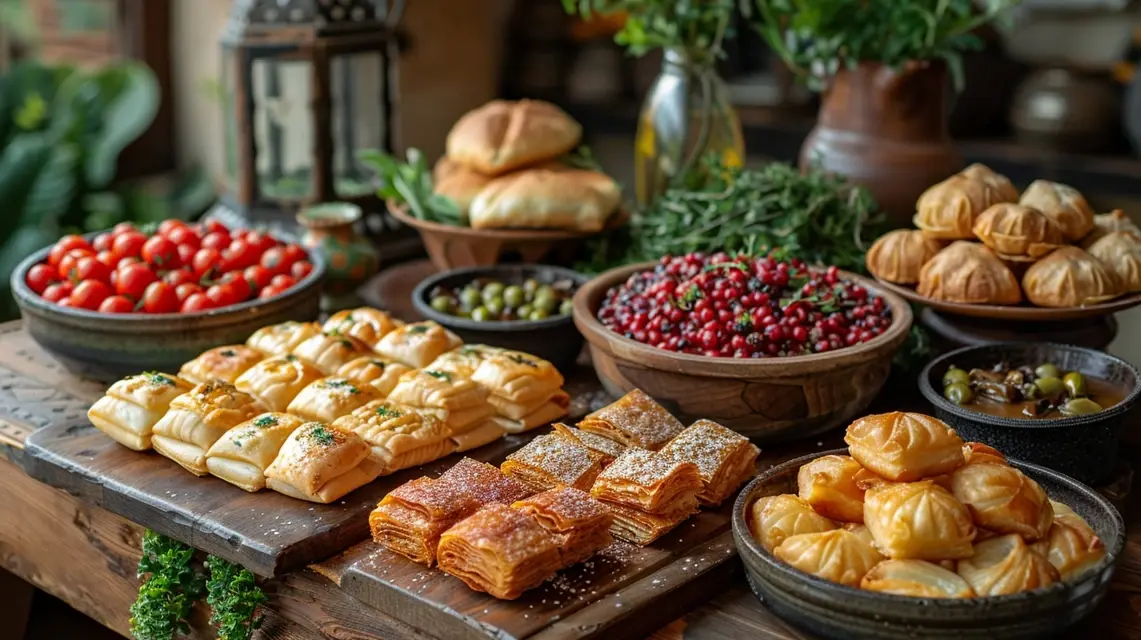The History of Kataifi in Ottoman Times
The story of kataifi is closely tied to the history of the Ottoman Empire, where food was both a reflection of cultural diversity and a display of wealth and refinement. During this period, kataifi evolved from a regional specialty into a dessert celebrated in palaces, markets, and homes across the empire. Its presence in Ottoman cuisine reveals much about the empire’s culinary traditions, trade, and emphasis on hospitality.
Kataifi in Ottoman Palace Cuisine
The Ottoman court was renowned for its lavish banquets, where food was not only consumed but also used to display power and grandeur. Kataifi, with its intricate pastry threads and syrup-soaked layers, fit perfectly into this setting. It was often served alongside baklava and other syrupy sweets, symbolizing abundance and indulgence.
A Dessert of Luxury
In the palaces of Istanbul, kataifi was prepared with premium ingredients such as pistachios from Gaziantep, almonds from Anatolia, and honey sourced from the Black Sea region. These luxury ingredients elevated the dessert, making it a delicacy reserved for important guests and festive occasions.
Kataifi in Everyday Ottoman Life
While kataifi had a prestigious role in palace cuisine, it was also embraced by the general population. In cities like Damascus, Cairo, and Thessaloniki, street vendors sold fresh kataifi, often baked in large trays and cut into generous pieces. This accessibility helped spread the dessert across diverse regions of the empire.
Regional Influences on Kataifi
The Ottoman Empire spanned three continents, and its vast geography gave rise to regional variations of kataifi:
- Anatolia: Heavily nut-filled versions, emphasizing walnuts and hazelnuts.
- Levant: Floral flavors like rose and orange blossom water were incorporated.
- North Africa: Kataifi adapted into puddings and layered desserts, reflecting local tastes.
Kataifi as a Social Dessert
Kataifi was not merely about taste—it was also a social ritual. Families prepared it during Ramadan, weddings, and religious feasts, turning the dessert into a shared cultural experience. In Ottoman society, offering kataifi was a sign of generosity and communal spirit, values that remain tied to the dessert today.
Connections to Trade and Commerce
Trade routes across the empire ensured that ingredients like nuts, spices, and sugar were widely available, fueling the popularity of kataifi. The dessert’s spread mirrored the flow of goods, ideas, and culinary traditions throughout Ottoman lands.
The Legacy of Ottoman Kataifi
Kataifi’s popularity during Ottoman times laid the foundation for its enduring presence in modern Greece, Turkey, Lebanon, and beyond. The dessert’s survival and adaptation highlight its versatility and cultural importance, bridging centuries of culinary history.
Conclusion: Kataifi as a Culinary Heirloom
The history of kataifi in Ottoman times reveals a dessert that transcended social classes and geographic borders. From palace banquets to bustling markets, kataifi was both a luxury and a shared tradition. Its role in Ottoman cuisine cemented its place as a cultural heirloom, one that continues to sweeten gatherings across the world today.
Related reading: Explore more historical and cultural insights in our Kataifi Dessert Traditions section.




